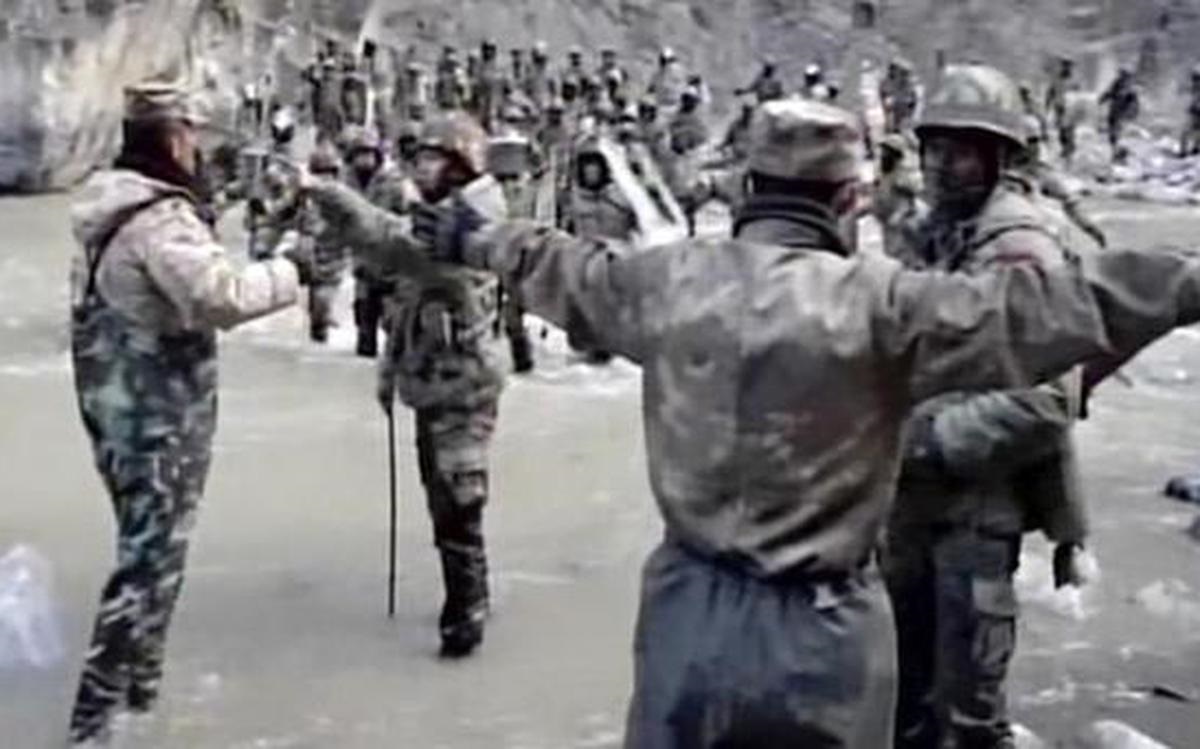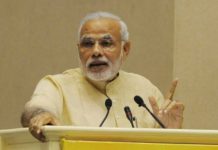
There is a growing apprehension in New Delhi of a massive flare-up on India’s borders with Tibet. It is feared that the Chinese President, Xi Jinping in his bid to re-assert his leadership, may resort to a misadventure
India has decided to maintain her troops on an alert mode on the nearly 3000 kilometres of India-Tibet border following the Chinese reluctance, if not totally refusal, to withdraw its troops to the pre-Galwan deployment position of 2020 and restore status quo ante.
It, however, was expected that the recent meetings between India’s External Affairs Minister, S. Jayashankar, and his Chinese counterpart, Wang Yi, might result in substantial progress in recent weeks, during the 16th round of India-China talks held during the middle of July 2022.
The Chinese stubbornness, thus, thwarts, at least for the time being, the possibility of cementing any strategic alliance of Russia, India and China (RIC). The RIC is the brainchild of Russian President Vladimir Putin. It is believed that Putin’s recent visit to Iran and his efforts of warming up towards Turkey was a part of the RIC strategy. He travelled to Iran amidst the Ukraine-Russia conflict. He was in the region during the US President, Joe Biden’s visit to the West Asian countries. Biden’s visit is being called a great success for establishing close ties among the nations of West Asia, which could be achieved in spite of the traditional animosity between Israel and the Arab nations.
It appears that China is deliberately cold shouldering the RIC, by delaying the unnecessary standoff on the India-Tibet border. It has given enough reasons to India to strengthen QUAD as well as join the American efforts for peace in the West Asian region. Putin has advised India to keep off from QUAD, the strategic cooperation among the four key nations in South-East Asia comprising India, USA, Australia and Japan.
Amidst these developments, there is a growing apprehension in New Delhi of a massive flare-up on India’s borders with Tibet. The decision to ignite the tense borders between the two Asian giants solely depends upon the Chinese President, Xi Jinping. Apart from threatening India for promoting QUAD, there could be domestic compulsions for Xi Jinping, who is seeking third term for retaining his supreme position in the country as its president and the chief of its military commission. There is also disquiet within China, where people are demonstrating against the government for the return of their funds deposited in local banks. It is alleged that their lifetime savings have been quietly siphoned off by local communists manning the rural banks.
Amidst these developments, Xi Jinping may resort to a full scale war, perhaps, on the basis of his assessment about his political expediency, against India. Therefore, it did not surprise anyone that the July 17 meeting held at Chushul-Moldo between Lt. General Anindya Sen Gupta, and Major General Yang Lin, the commander of the South Xinjiang military division, has concluded without any substantial agreement for withdrawing troops to the position of pre-Galwan clashes of 2020.
In India, the Government is facing severe criticism from the country’s main opposition, the Congress Party. It has accused during the ongoing monsoon session of Parliament that China continues to infiltrate and violate Indian borders, and the government is deliberating ‘hiding’ the facts. It has also blamed Prime Minister Narendra Modi for ‘denying’, ‘distracting’, ‘lying’ or ‘justifying’ the present situation at the LAC.
The situation, however, on the borders continues to be grim with the two sides having deployed massive artillery and more than 50,000 well-equipped armed forces on the sensitive India-Tibet borders, especially the region which had witnessed armed clashes in 2020 in the Galwan Valley of Eastern Ladakh. The Chinese aggression may take place in any sector of the 3000-km long borders.
Xi Jinping’s Political Agenda
There is a general apprehension in New Delhi that in a bid to re-assert his leadership, Xi Jinping, may try to annex a part of Indian territories from Ladakh to Arunahcal before the Communist Party meets in November this year. According to the Chinese document circulated by its official news agency, attack on India has been on the third position of the six wars in 2021; China has to fight for asserting its super power status. The satellite images and movement of the Chinese forces on the Tibetan side of the borders have already alerted Indian security forces that the war may take place anytime.
The six ‘inevitable’ wars being discussed in various Chinese documents indicate that it has to assault on Southern Tibet (Arunahcal) during the period 2035-40. The war for unifying Taiwan is scheduled for 2020-2025; and the time frame for the war to recover the South China Sea islands has to be waged during 2025-2030. The Indian establishment is not totally unaware of any possible Chinese misadventure, especially when Xi Jinping needs to improve his declining political image.
It, however, is for Xi Jinping to assess whether an invasion of India will improve his political clout in the domestic politics and China’s international image, especially before the 19th Central Committee session of the Communist Party of China scheduled on November 8-11. He needs to claim big successes for seeking third term of his presidency.
India: A Soft Target
There is a general impression that the People’s Liberation Army (PLA) considers India a soft target than Taiwan or any military activity in South China Sea. The road map of Xi Jinping’s vision of imperial China, according to the strategic documents circulated by the Chinese media has announced that the 1st War: “Unification” of Taiwan (Year 2020 to 2025), the 2nd War: “Reconquest” of Spratly Islands (Year 2025 to 2030), the 3rd War: “Reconquest” of Southern Tibet (Year 2035 to 2040), the 4th War: “Reconquest” of Diaoyu Island (Senkaku) and Ryukyu Islands (Year 2040 to 2045), the 5th War: Unification of Outer Mongolia (Year 2045 to 2050) and the 6th War: Taking back of lands lost to Russia (Year 2055 to 2060).
The apprehension in India is that since the two wars for merging Taiwan with the Mainland China and wresting the Sparty Islands may not be possible according to the schedule, it could be easier to annex Arunachal from India. The Indian war room discussions include an in-depth study of the age-old Chinese war strategy, popularly called Wei, which focuses on cheating the rivals by sudden moves while adorning the mask of innocence or peace.
It is different than the chess board, but the Indian military science experts believe it is a Chinese version of the “Pasha” played for defeating the Panadavas in gambling against the Kauravas in ancient India. It was mastered by the Duryodhan’s maternal uncle , Shakuni, to cheat and oust the Pandavas. It was brought to China by the mariners navigating between China and Indian coasts.
The Chinese military strategists, perhaps, consider India a ‘soft target’, much easier to humble her than to attack Taiwan having committed security umbrella comprising the conventional weapon systems as well as nuclear shield.
India, however, is ready to pick up the gauntlet; and the repercussions of this unwanted confrontation. The flare-up might also end the Chinese dream of becoming a Super Power. In that case, India might also not hesitate to support the subjugated people of the Muslim-majority province, Xinjiang Uygur Autonomous region, suffering all sorts of repressions, the Buddhists of Tibet and freedom-loving people Taiwan.
The Chinese imperial vision is now blended with the political aspirations of Xi Jinping’s, who wants to be remembered as the three legendary figures of his country, Mao, Zhou and Deng. Therefore, it is difficult for him to quietly ignore the greetings from Prime Minister Modi to Dalai Lama, who has also been to Ladakh recently.
Book, film to bolster morale
The book, ‘China Is Not Afraid — New Threats to National Security and Our Strategic Responses’, published by China is being considered a part of a larger PLA strategy to invigorate and bolster the morale of domestic constituencies, both military and otherwise.
It is interesting to note that a PLA-inspired film and a news agency article also give an insight of the Chinese narrative of the 21st century. The Chinese film Silent Contest was controversial as soon as it appeared on Chinese and global websites. It suggests that the United States is trying to subvert China through five avenues: (1) undermining China politically, (2) engaging in cultural infiltration, (3) warfare in terms of ideas, (4) the training of fifth column agents and (5) the fostering of opposition forces within China. The overall message is that the United States seeks not simply to dismember China but aims to find ways to take it under control.
Apart from the PLA, the National Defence University, the Chinese Academy of Social Sciences and the China Institute of Contemporary International Relations, which is subordinate to the Ministry of State Security, participated in the production of the film. First, the film, and later the articles on the six wars China must fight indicate that Xi Jinping is keen to silence his political opponents by indulging in hyper-nationalist attitude.













